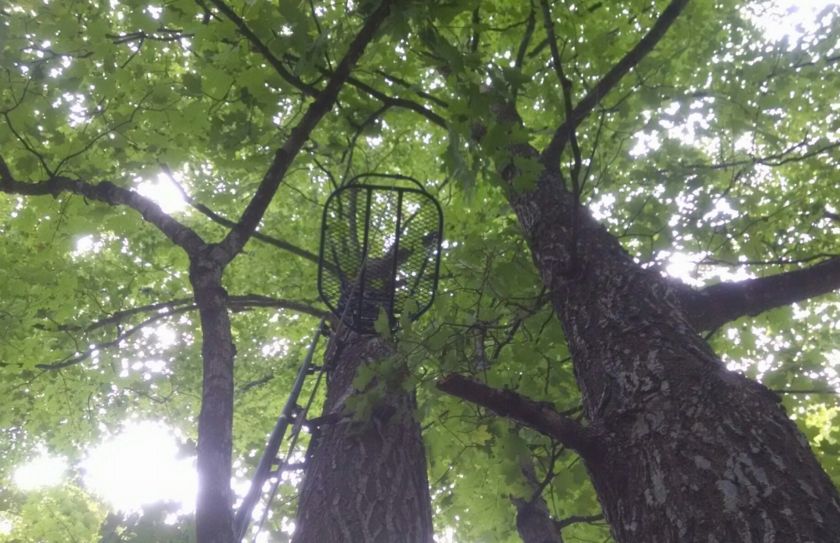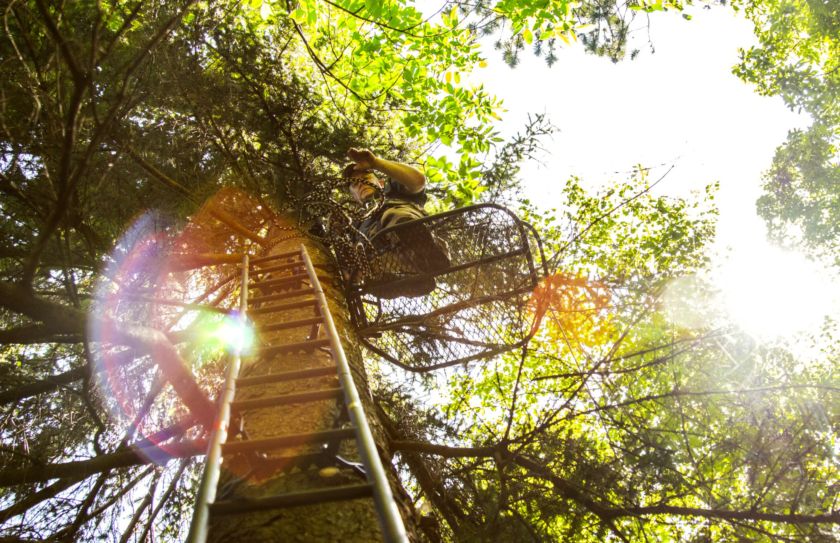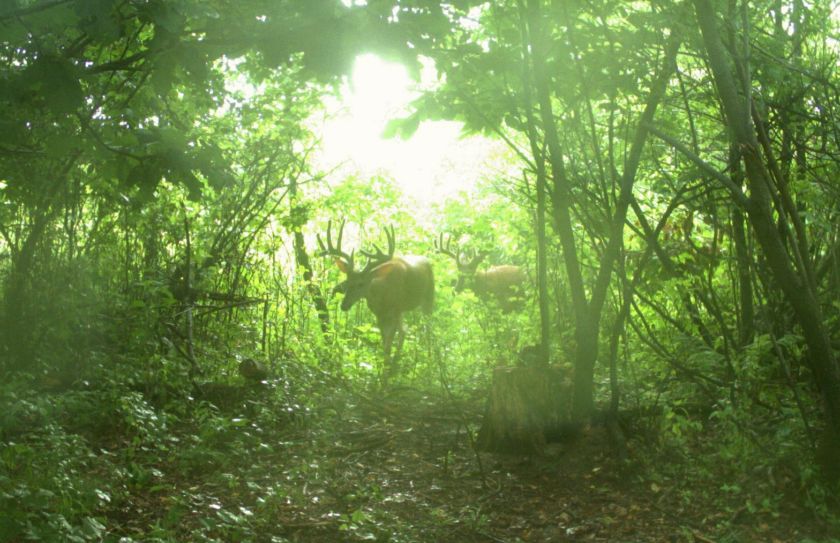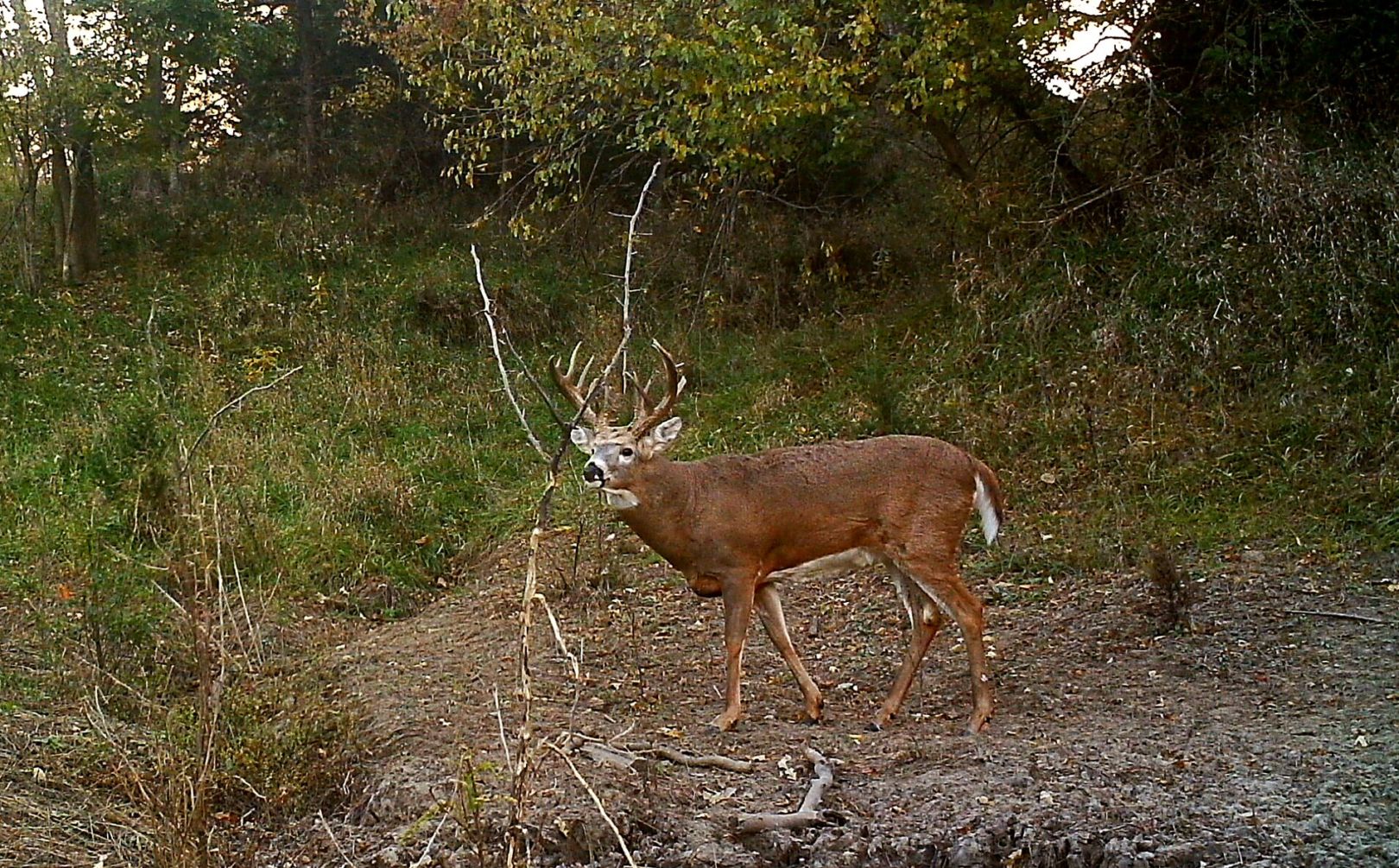
Finding the Right Exit Strategy
Like me, you may have tried a lot of treestand exit strategies in the past. From barking like a dog to howling like a coyote to even throwing my practice arrow into the field, I have tried many ways to keep deer from knowing that I had been lurking within harms way. My goal is to enter and exit a stand location without ever alerting a deer to my hunting activities, but that takes a lot more than making enough noise to “naturally” spook deer away from an evening food source stand.
Individual stand preservation is one thing, but 1 worn out stand location is typically reflected by an entire approach to your favorite hunting grounds. Most often if 1 stand is over pressured, more than that 1 stand on a parcel is over hunted. Stand rotation strategies may at first seem difficult to master, in particular when it comes to creating appropriate treestand exit strategies. However, the more I hunt the less I have to worry about spooking deer when I leave my stand, because I follow 3 simple practices:
- Food-less Treestand Exits: I love food plots and I have planted 100s of acres of my own plots since the mid 90s, but I have harvested less than 10% of my mature bucks on a food source. To attempt a solid treestand exit strategy that consistenly involves a high % of sit opportunities over food sources, creates a recipe for consistenly spooked deer. Consistently pushing deer away from your treestands during an exit, makes it nearly impossible to experience hunting success on any level, let alone for targeting mature bucks. I do occasionally enjoy hunting food plots, but if your food plot hunts represent much more than 20-30% of your sit opportunities, it may be time to rethink your stand locations.
- Bedding Area Staging Stand Locations: While food source treestand setups account for less than 10% of my mature buck harvests, bedding area staging areas account for at least 70-80%. A bedding area staging area is that sacred portion of whitetail habitat that a mature buck enters into, right after he exits from his daytime bedding area. From there, he may fan out into multiple afternoon destination food sources that contain a high degree of social activity, but his bedding staging area should be full of rubs, scrapes and serves to act as a transfer hub to other locations. Most of the mature bucks I have shot during the evening hours have been within these area, as well as the morning hours. One of the best aspects of a location like this, is that deer are simply passing by, often hundreds of yards away from their preferred evening food sources. Deer rarely linger around for more than 10-15 minutes and opposite of a food source stand location, it becomes easier to employ a spook free treestand exit the closer to dark it becomes.
- A Quick Treestand Retreat: When deer are present around my treestand and they aren’t the deer that I want to shoot, I get pretty nervous the closer it gets to dark. Then it happens! The deer slowly drift away and I am left with that awkward period of time of the day that still offers 5-10 minutes of shooting light, but also offers the risk that another deer may approach and hang around until 45 minutes after dark. What I typically like to do, is exit my treestand as quickly as possible to get out of the danger zone of being discovered by another deer or even worse yet, multiple deer that will have an even greater impact for jeapordizing future sits.
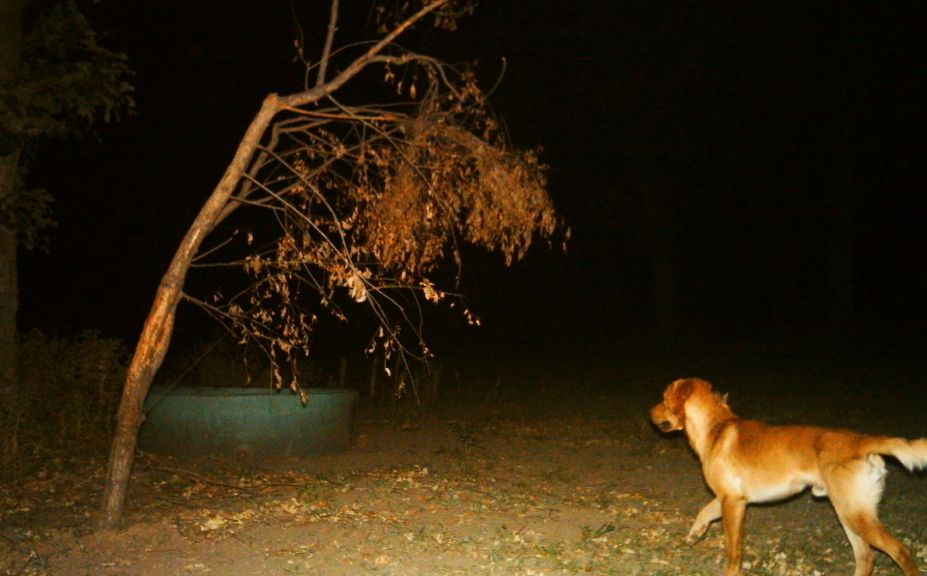
*Barking dog and howling coyote sounds may scare a deer out of your favorite stand setup, but how long does that negative imprint last to the deer that were spooked? What about your buddy picking you up in a truck? The best stand strategy involves being as low impact as possible. For more treestand tips, make sure to read about whitetail rut treestand rotation tactics!
Easy Treestand Exit Begins Early
If worst comes to worst and you are completely trapped, you have 3 choices: Wait them out, have your buddy pick you up in the truck or turn your cell phone on to the best coyote or barking dog noises it can make. However, with great stand locations and exiting potentially before you are trapped in the first place, you can eliminate the need for a hard spook by other means. An effective treestand exit routine often begins in the early planning stages of not only 1 stand location, but all of them. As you hunt this season, can you effectively exit the majority of your treestands with a very low probability of spooking deer?
